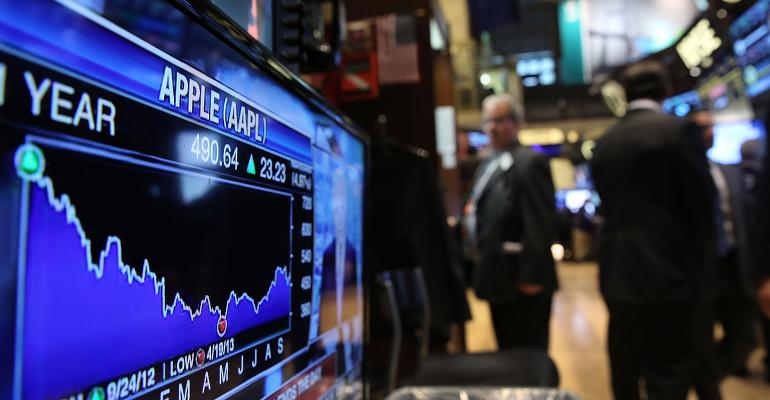(Bloomberg) -- Investors who thought their S&P 500 Index fund is diversified are getting a rude shock.
The benchmark stock index fell for a seventh straight week, its longest losing streak since 2001, but its drop would be far less dramatic if it wasn’t so heavily weighted to mega-cap tech stocks like Apple Inc., Microsoft Corp., Amazon.com Inc., Alphabet Inc. and Meta Platforms Inc.
The S&P 500 is, after all, a momentum play, since stocks with the largest market capitalizations carry the most weight, and tech’s dominance gives it outsized influence on the index’s performance. That was positive for investors on the way up as the high-fliers surged, and now even savvy investors are getting a lesson on just how much of an impact a few stocks can have on the way down.
A simple way to see how big a role the five largest tech stocks played in the S&P 500’s recent decline is to look at what index returns would be if you left them out. So far this year, the S&P 500 is down 18%. Without the Big 5 in the mix, the index would be down just 12%.
For perspective on how tech’s place in the S&P 500 has grown, look back to another painful time, when the stock market bottomed on March 9, 2009. The largest stock then was $319 billion energy giant Exxon Mobil Corp., at 5.6% of the index, followed by consumer products company Procter & Gamble with a market value of $129 billion and a weighting of 2.2%.
Fast forward to the peak of the market on Jan. 3 of this year and Apple led the pack with a market value of nearly $3 trillion and 6.9% of the S&P 500, followed by Microsoft at about $2.2 trillion and 6.2%. In total, the Big 5 tech stocks made up nearly a quarter of the benchmark.
The tech concentration is even greater in the leading 401(k) retirement savings plans. The T. Rowe Price Blue Chip Growth Fund, for one, had more than 60% in its top 10 holdings as of March 31, which were led by Microsoft (11.6%), Amazon (10.9%), Alphabet (10.2%), Apple (8.7%) and Meta (5%). The fund is down 32.5% so far this year.
The long bull run has left plenty of other popular 401(k) funds stuffed with tech. The Fidelity Contrafund had 50.7% in its top 10 holdings as of March 31. The heaviest weight went to Amazon, at 8.2%, followed by Warren Buffett’s Berkshire Hathaway, a company that can act as ballast against volatile tech stocks. But Berkshire itself isn’t immune to the lure of big tech. As of March 31, Apple was the largest common stock in Berkshire’s $390.5 billion stock portfolio, accounting for almost 41% of the portfolio’s total market value.
--With assistance from Lu Wang and Katherine Chiglinsky.
To contact the author of this story:
Suzanne Woolley in New York at [email protected]





